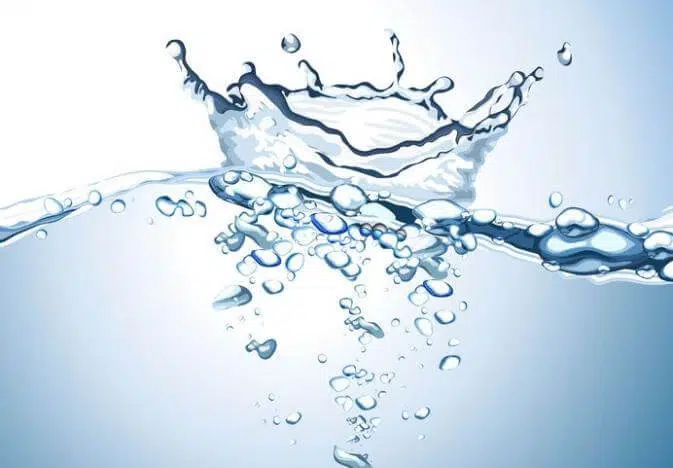Numerous parts of South Africa have been burdened by drought over the past few years. This is a serious issue for livestock farmers because water is the single largest nutrient when it comes to livestock feed. Unfortunately, not all producers are as concerned about the quality of water on their farms and the amount of water available for their livestock as they should be. Wiaan Faber, technical ruminant specialist at Chemuniqué, is doing a great deal of research into this issue and believes that the importance of water as a nutrient is often overlooked.
According to him, water performs very important functions in a livestock herd. “Water is required to regulate body temperature, growth, normal rumen fermentation, digestion, metabolism, nutrient flow through the digestive tract, good absorption of nutrients, and discharge of waste such as urine, excrement and sweat. It also distributes nutrients to other parts of the body. The function of adequate water of good quality can never be underestimated.”
Animals that are not provided with enough good-quality water cannot optimally utilise the nutrients in their feed.
Where do animals get water?
Wiaan explains that livestock get their water from three sources: drinking water, water derived from feed, and metabolic water. The latter is formed through the oxidation of hydrogen-containing sources (although this is insignificant). The most important source remains the animal’s actual drinking water. It is therefore important for livestock farmers to ensure that the water supply is sufficient in relation to the group’s size and that the quality is on par.
It is difficult to determine how much water animals require, since several factors affect their water intake:
- Animals: The animal’s age, weight, physiological stage (lactation), production level, individual behaviour, pregnancy, activities, stress level, health, and even breed differences are all factors that can affect water intake.
- Environment: Factors that may be a variable are seasons, heat, humidity, drought, type of diet, feed intake, dry material content of ration, structure and chemical composition of the ration, salt content of the ration, water availability, water temperature, and placement of water troughs.
- Water quality: Salt content, acidity or alkalinity, toxic elements (minerals) in the water, and algae growth play a major role.
Signs of a lack of water
Wiaan says the following signs may occur in livestock that drink too little water:
- compacted manure;
- poor urine output;
- poor and infrequent drinking behaviour;
- inexplicable decline in production;
- the volume of the blood cells (haematocrit) increases and blood becomes sticker because it contains less water;
- health problems; and
- animals may even drink their own urine because they have a potassium, salt, and protein deficiency;
Table 1 Estimated total daily water intake of livestock.

Table 2 Estimated total daily water intake (litres) of beef cattle at various temperatures (source: Nutrient Requirements of Beef Cattle: Eighth Revised Edition, 2016).

Extreme heat has a major effect on water intake. “Some animals can handle heat better than others. For example, cattle cannot handle heat as well as sheep, since cattle do not sweat as easily and animals depend on respiration to cool down. An increase of 10°C can double the animal’s water intake,” says Wiaan.
Water quality is important
Wiaan says water quality is just as important for animals as the amount of water they drink. “Good-quality water is defined by factors such as smell, taste, turbidity, electrical conductivity, and the presence or lack of bacteria and other harmful substances.”
The following five characteristics are considered when assessing water quality for livestock:
- smell and taste;
- water temperature;
- chemical content of the water, including undissolved solids, acid (pH), and other chemical substances such as potassium, sulphates, chloride, iron, zinc, manganese, and nitrates;
- biological characteristics such as algae; and
- microbiological characteristics such as bacterial content
Mineral concentrations in water may increase amid drought conditions. “The water intake will rise if salt-based licks are fed in dry periods. When the salt content of the water is close to the upper limit, eating extra salt will suppress appetite and cause digestive problems, resulting in the opposite than what the lick was intended for.”
The following signs in livestock may indicate poor water quality:
- poor growth and reproduction;
- strange eating habits and an upset stomach; and
- a decrease in animal health, especially of new arrivals on the farm.
Wiaan advises farmers to test the quality of their animals’ water at least twice a year, so as to determine whether the water has been contaminated and whether adjustments need to be made.
Basic management practices
“On some farms water quality is not a problem, but basic water management practices are still unsatisfactory. Water management practices pose several problems that commonly include stocking rates that are to high, too few water troughs for the number of animals, and water troughs that are not filled up quickly enough, not allowing animals enough time to drink water as part of their normal routine,” he explains. Simple management changes include:
- cleaning troughs at least once a week;
- ensuring that the water systems on the farm provides enough water for all animals, especially at peak times of the day;
- designing and placing troughs so that animals can drink comfortably;
- providing enough space at the water trough for each animal; and
- protecting the water sources from contamination.
“Farmers can improve the management and use of drinking water by wisely utilising, preserving, and protecting available clean water as far as possible. The sustainability of production systems will in future depend on the more efficient use of water in order to ensure maximum animal performance and herd health. Enough high-quality, clean drinking water will always be the most important nutrient for animals,” says Wiaan.
Chemuniqué empowers feed and food producers with the most innovative animal performance solutions, enabling our clients to consistently advance the efficiency of production.









